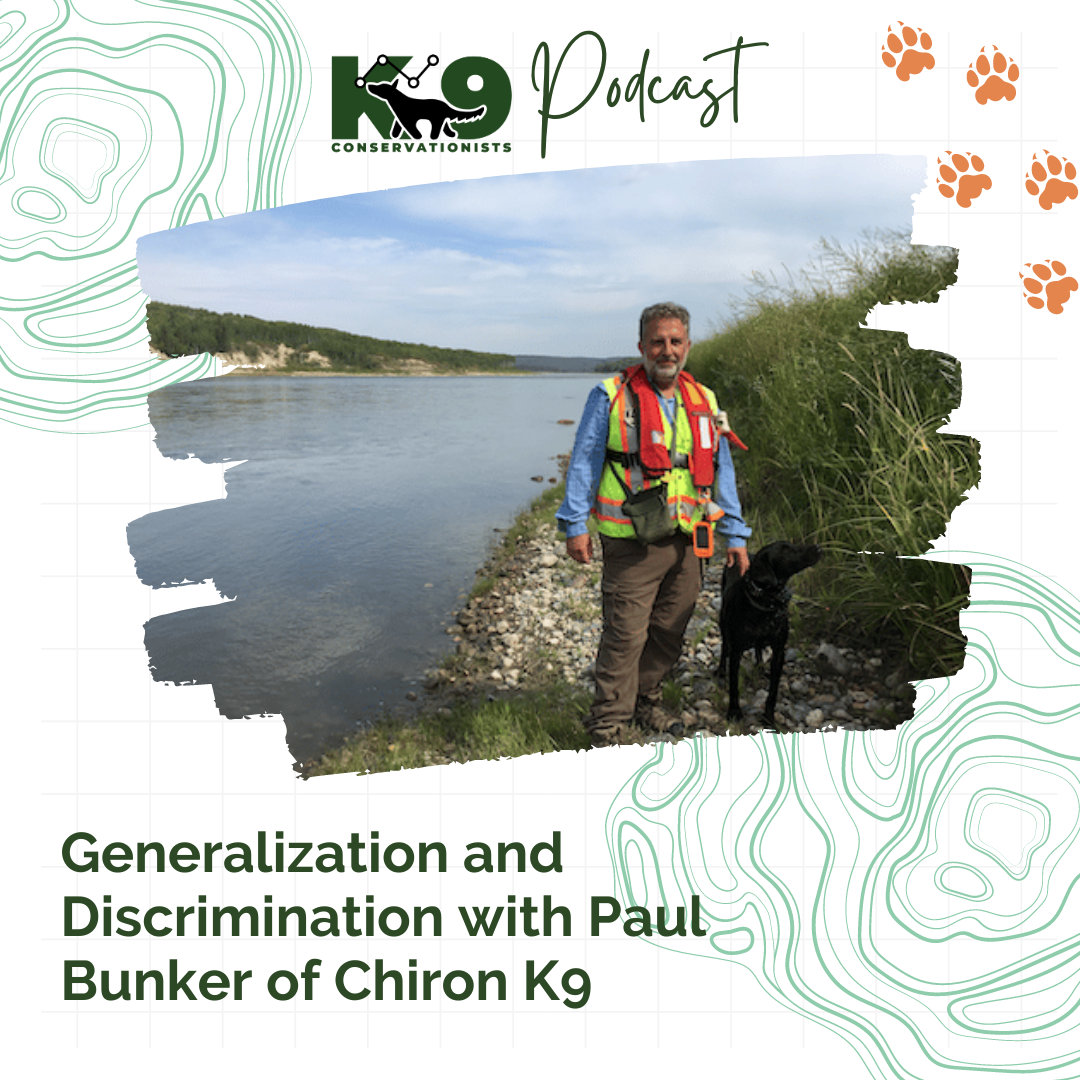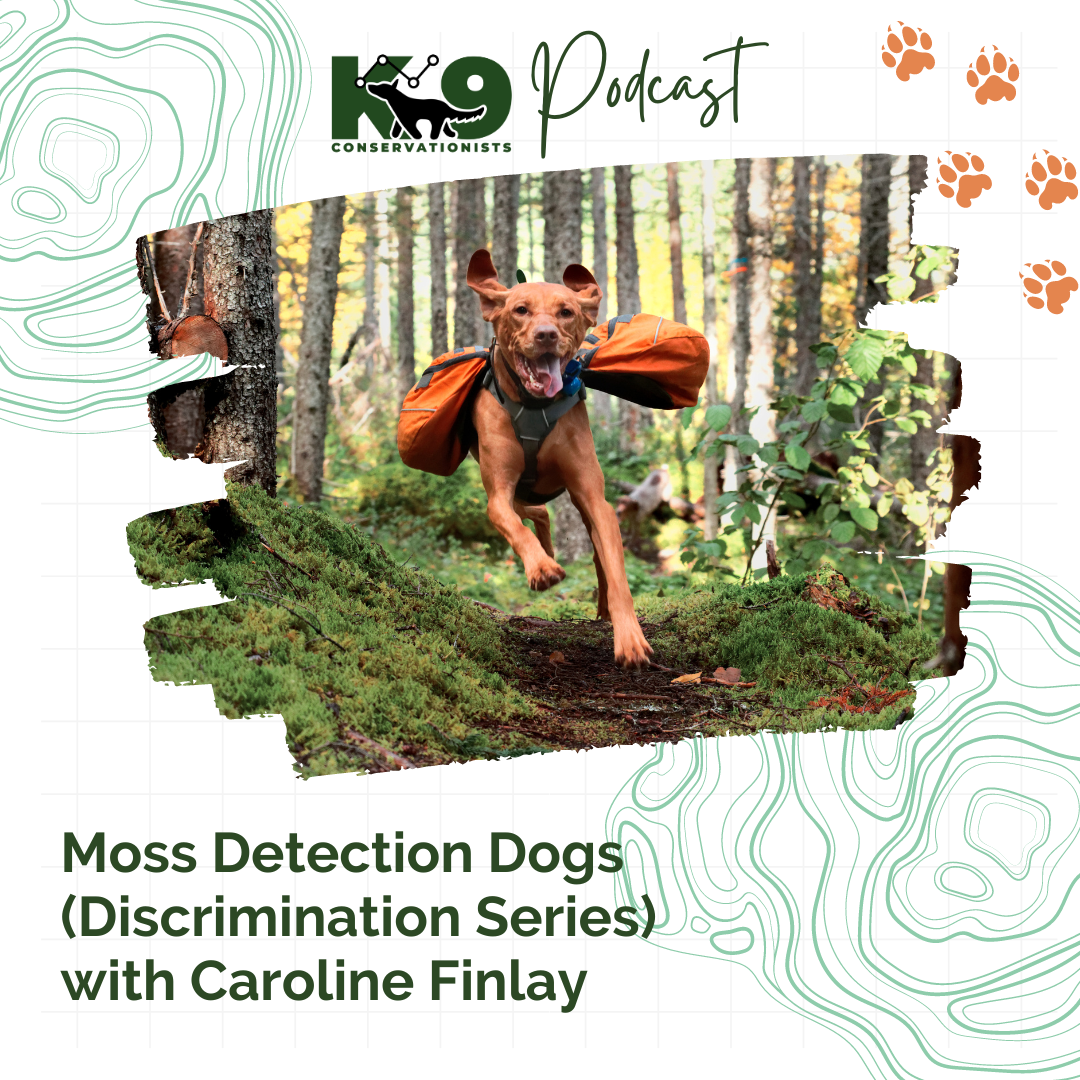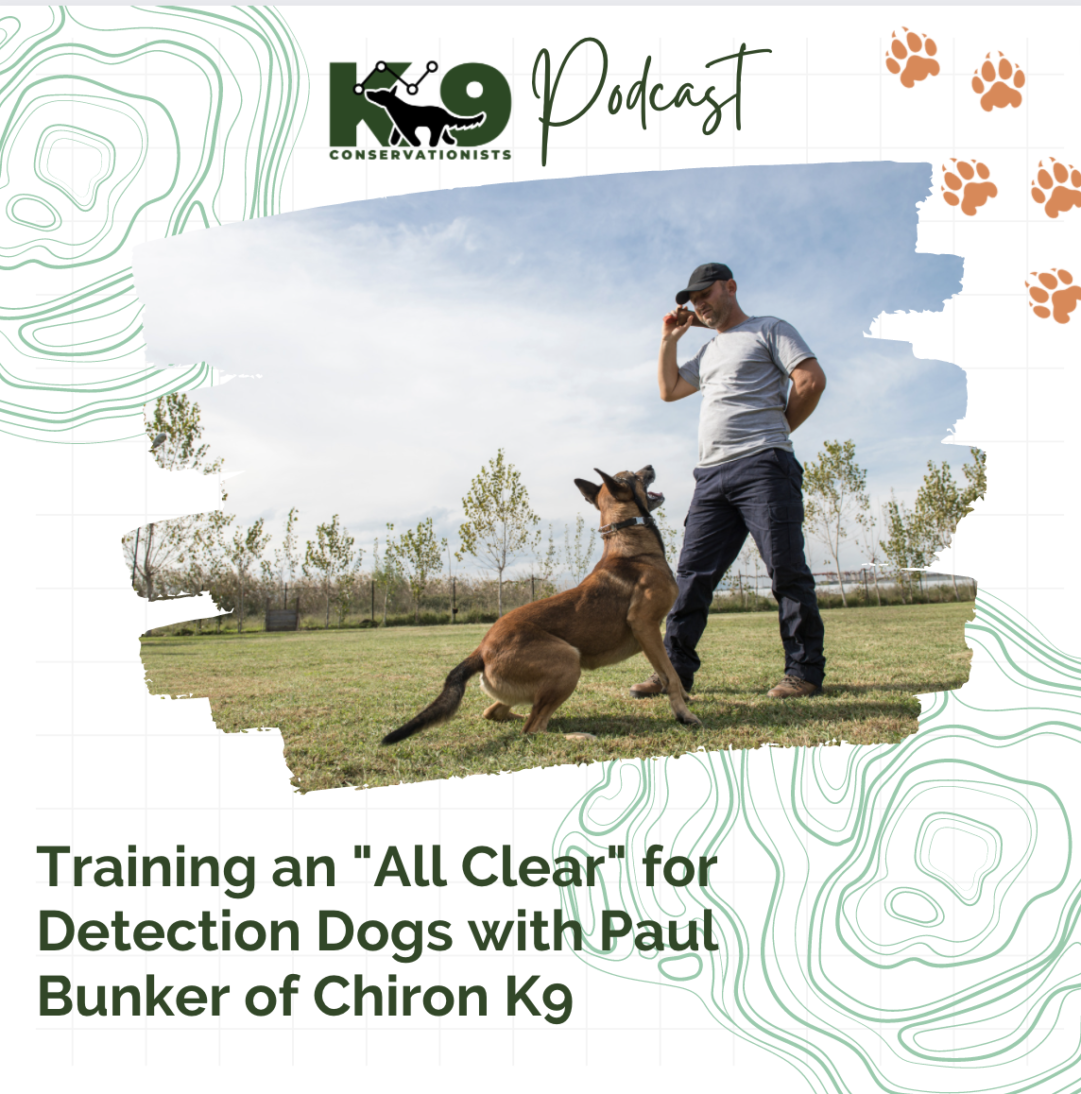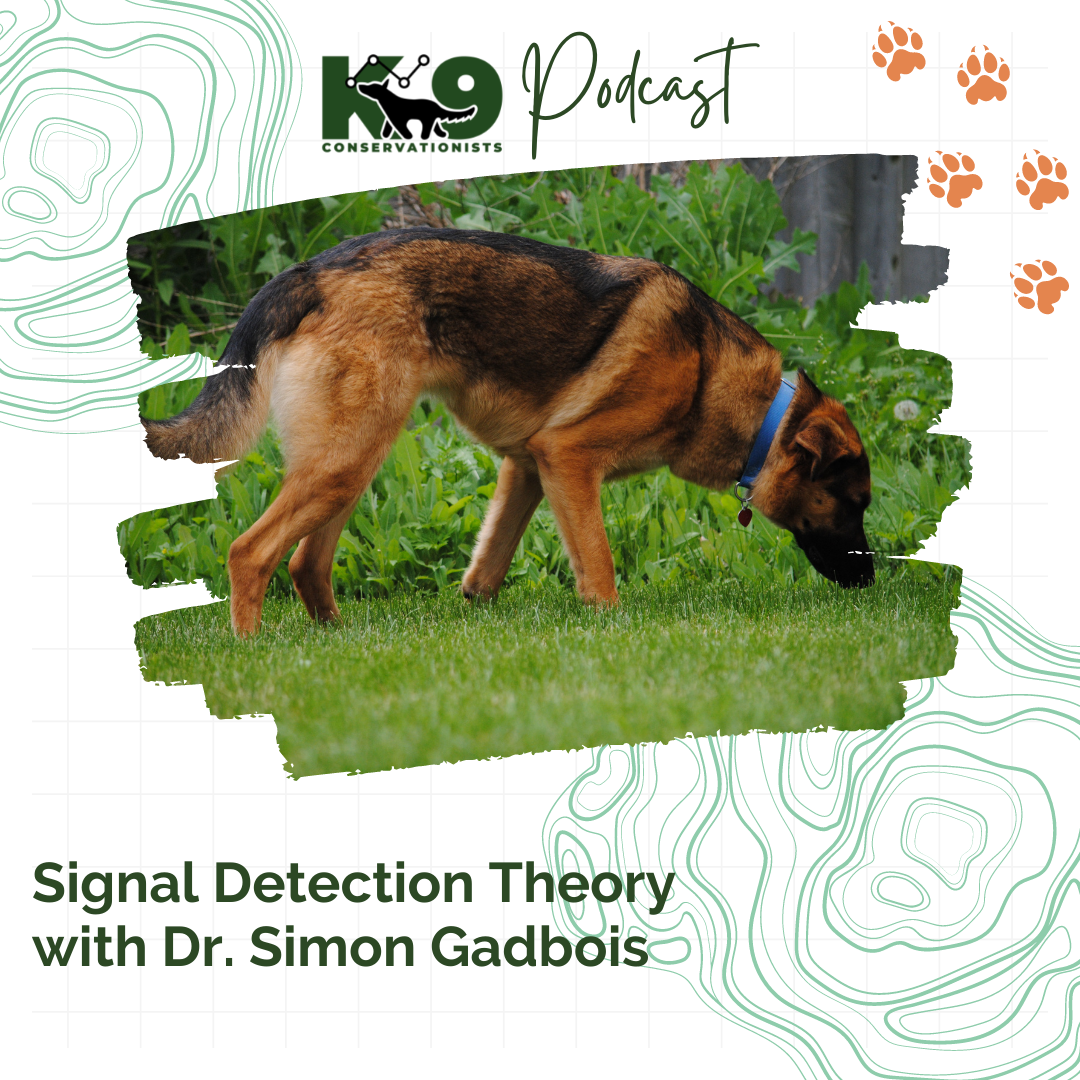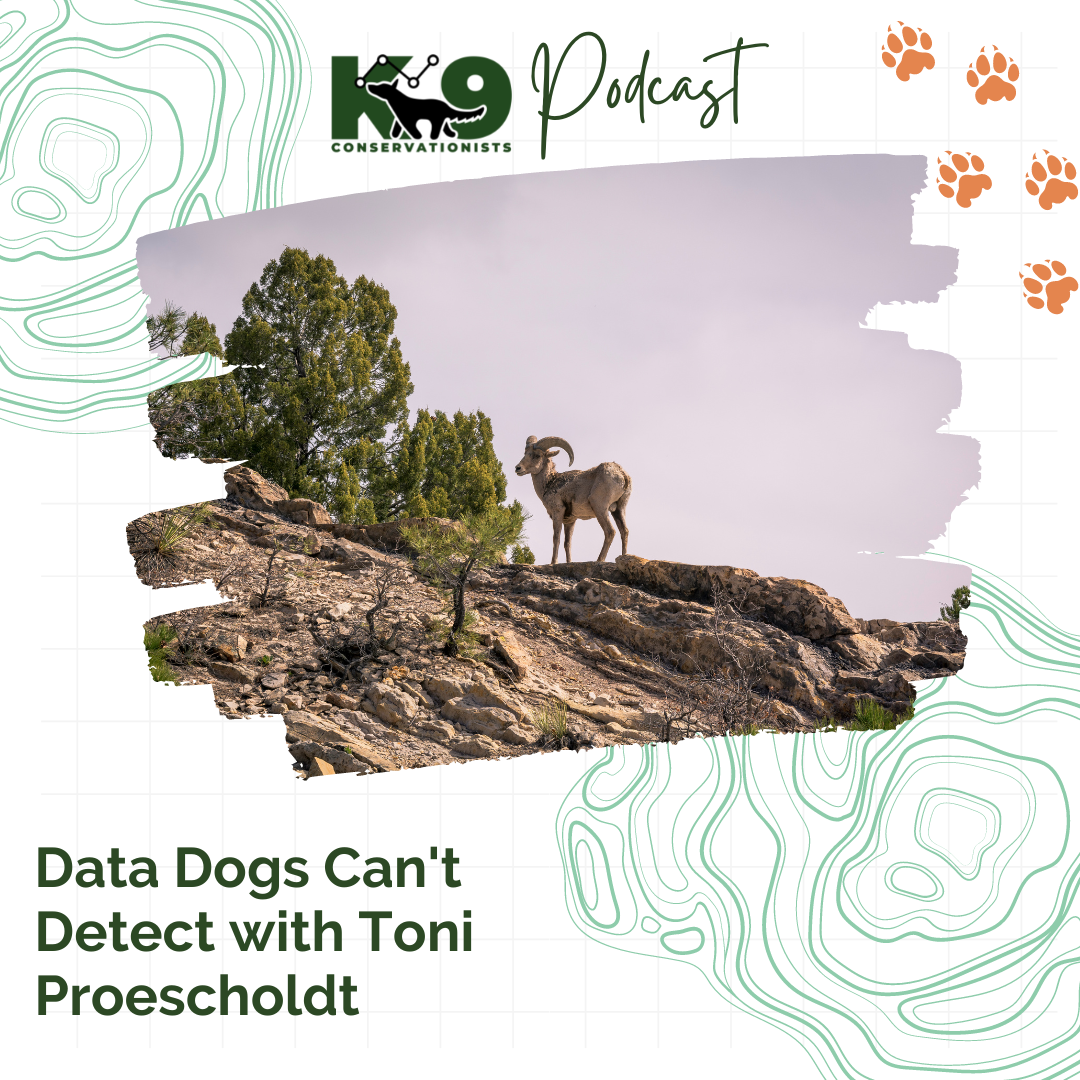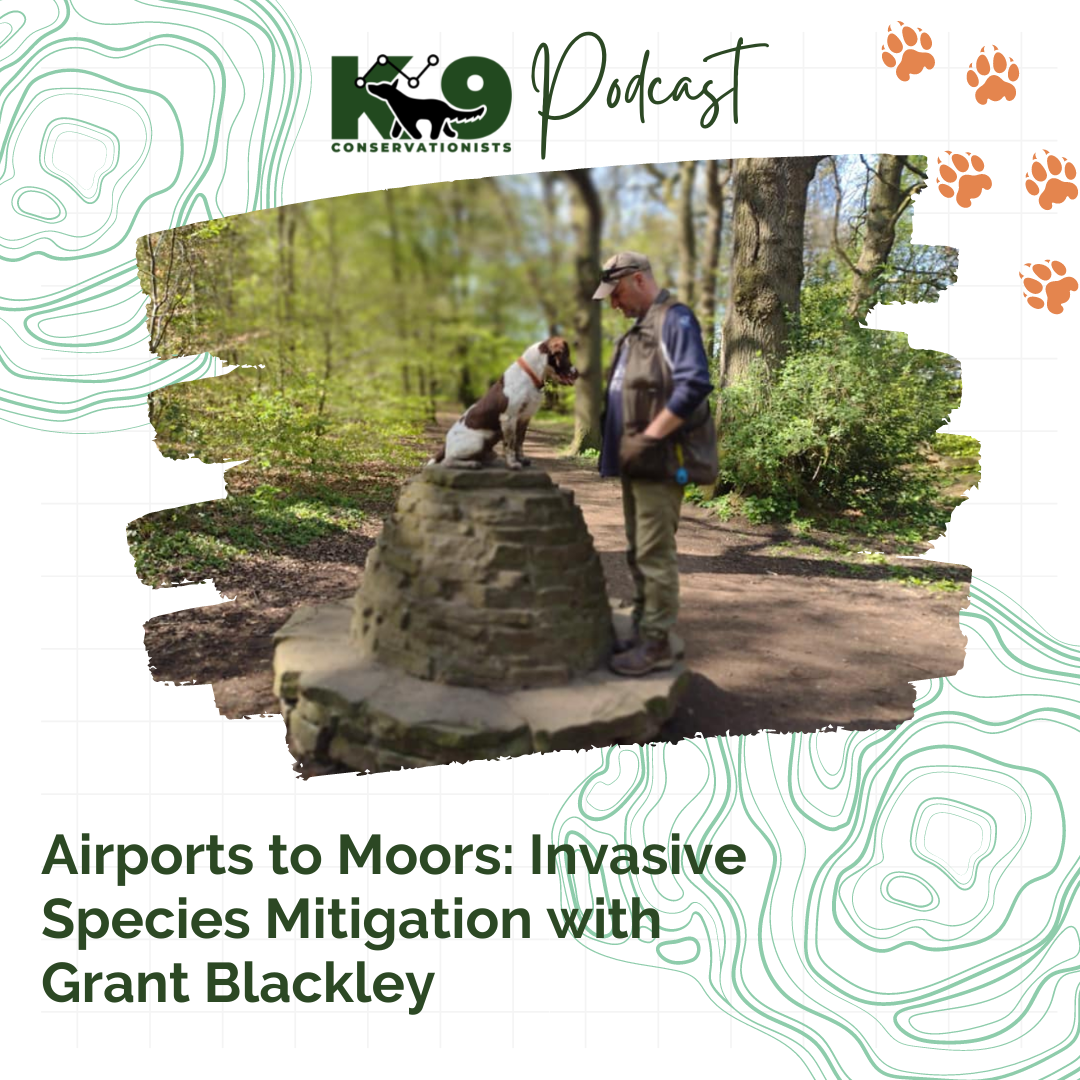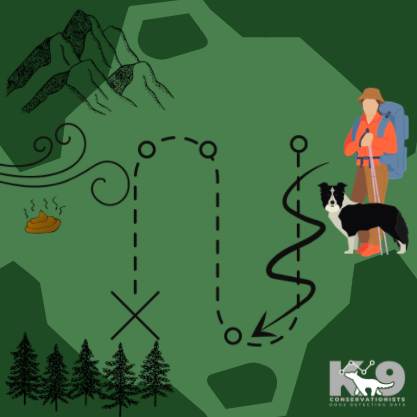For our final episode of our odor discrimination series, Kayla talks with Paul Bunker from Chiron K9 about generalization and discrimination. Science Highlight: None this week Links Mentioned in the Episode: None Where you can find Paul: Website | Instagram You can support the K9 Conservationists Podcast by joining our Patreon at patreon.com/k9conservationists. K9 …
Odor Discrimination Part 4: Moss Discrimination with Caroline Finlay
For our fourth episode of our odor discrimination series, Kayla speaks with Caroline Finlay from Conservation Detection Dogs Northern Ireland about moss discrimination. Science Highlight: Relative abundance of endangered San Joaquin kit foxes (Vulpes macrotis mutica) based on scat-detection dog surveys Links Mentioned in the Episode: Canine detection of chronic wasting …
Odor Discrimination Part 2: Training an “All Clear” for Detection Dogs with Paul Bunker
In the second episode of the odor discrimination mini series, we revisit an older episode of K9 Conservationists where Kayla speaks with Paul Bunker of Chiron K9 about all clear procedures. Science Highlight: An assessment of the effects of habitat structure on the scat finding performance of a wildlife detection dog What …
Odor Discrimination Part 1: Signal Detection Theory with Simon Gadbois
In the first episode of the odor discrimination mini series, we revisit an older episode of K9 Conservationists where Kayla Fratt speaks with Dr. Simon Gadbois to talk about signal detection theory and his conservation work. Links Mentioned in the Episode: Signal Detection Theory Where to find Dr. Gadbois: Website | Lab Facebook …
Data Dogs Can’t Detect with Toni Proescholdt
In this episode of K9 Conservationists, Kayla speaks to Toni Proescholdt from Utah State about the data that dogs can’t detect. Science Highlight: Can volunteers train their pet dogs to detect a novel odor in a controlled environment in under 12 weeks? Links Mentioned in the Episode: You can support the …
Airports to Moors: Invasive Species Mitigation with Grant Blackley
In this episode of K9 Conservationists, Kayla speaks with Grant Blackley from Orkney Native Wildlife Project about transitioning from airport screening detection dogs to working with conservation detection dogs. Science Highlight: Olfaction-based Detection Distance: A Quantitative Analysis of How Far Away Dogs Recognize Tortoise Odor and Follow It to Source What …
How Wide Should Conservation Dog Search Transects Be?
When searching an area for scat, invasive plants, or other data points, many researchers and conservation detection dog teams employ a transect search. In order to determine the appropriate spacing of your transects, you need to understand the local conditions influencing air flow and the probability of detection for your …
 Donate
Donate

